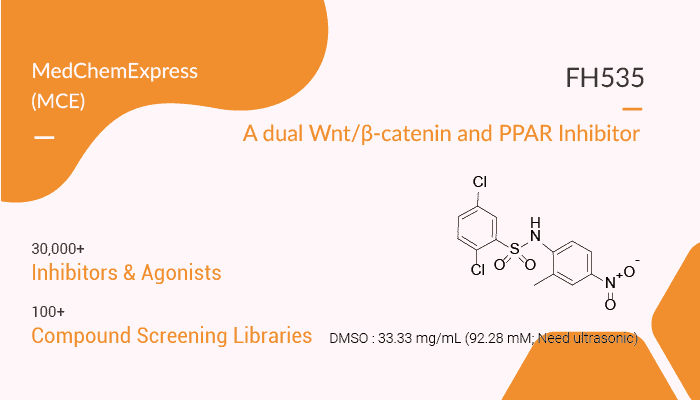The Wnt signaling pathway is important in normal development and in cancer. This signaling pathway is regulated by Wnt ligands, the APC-Axin complex and β-catenin. Wnt/β-catenin signaling pathway plays a central role in regulating the balance between stem cell growth and differentiation. Thus, the degree of Wnt signaling activation is an important modulator of the stem cells cancerous potential.
Peroxisome proliferator–activated receptors (PPAR) are members of the nuclear hormone receptor superfamily. The ligand-activated transcription by these receptors requires heterodimerization with retinoid X receptor, interaction with different coactivators as well as binding to PPAR-response elements (PPRE). There are three PPAR isotypes (α, γ, and δ), differing in their tissue distribution, physiologic functions, and ligand specificity.
Morever, the physical interaction between β-catenin and PPARγ suggests a possible mechanism of cross-talk between the Wnt and the PPAR signaling pathways. On the transcriptional level, β-catenin enhances PPARγ activity whereas PPARδ is a target for β-catenin/Tcf regulation.
In this article, we will introduce an anti-cancer agent FH535.

FH535 is a Wnt/β-catenin signaling inhibitor and dual antagonists of PPARγ and δ activity.
FH535 is an inhibitor of Wnt/β-catenin and PPAR. It inhibits PPARγ and PPARδ transactivation in HCT116 cells. This compound (15 μM) activity depends on functional PPARδ but does not require a cysteine residue in the PPAR ligand-binding domain. FH535 also inhibits recruitment of the coactivators GRIP1 and β-catenin to PPARδ and PPARγ. It also shows toxic effects on 12 carcinoma cell lines expressing wnt/β-catenin pathway. This compound (20 μM) suppresses the β-catenin pathway in pancreatic cancer cells, and inhibits pancreatic cancer cell migration. Furthermore, FH535 (20, 40 μM) inhibits pancreatic cancer cell invasion and cell growth. It represses angiogenesis-related genes in pancreatic cancer cells.
FH535 (25 mg/kg, i.p.) exhibits an anti-tumor effect on pancreatic cancer xenografts in mice. It also represses angiogenesis in pancreatic cancer xenografts.
In conclusion, FH535 is a potent inhibitor of Wnt/β-catenin and PPAR. FH535 has the potential for the research of cancer diseases including pancreatic cancer. It also can be used for the research the mechanism between Wnt/β-catenin and PPAR.
Reference:
Meng-Yao Wu, et al. FH535 inhibited metastasis and growth of pancreatic cancer cells.